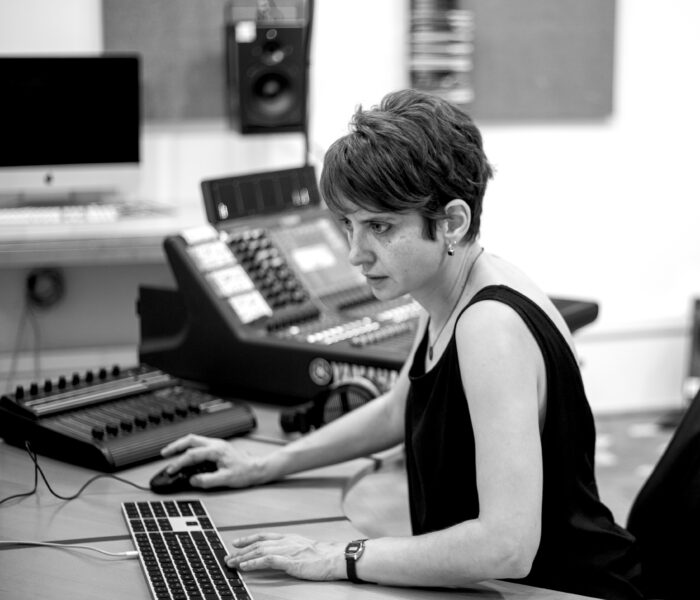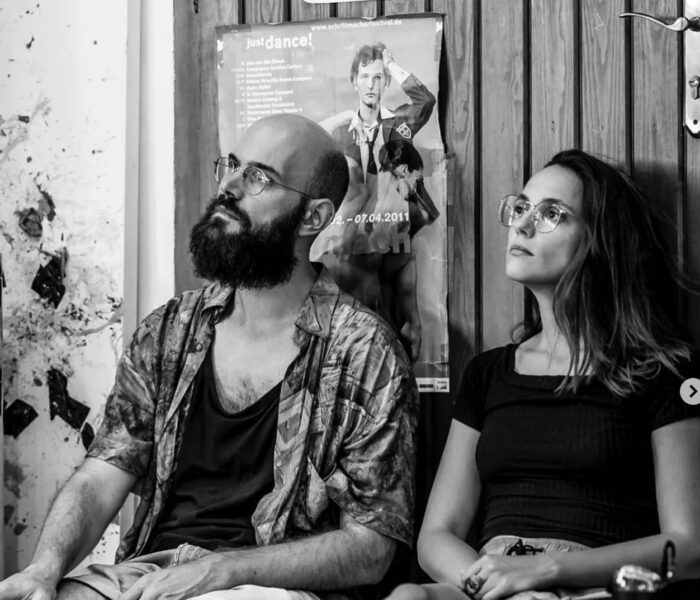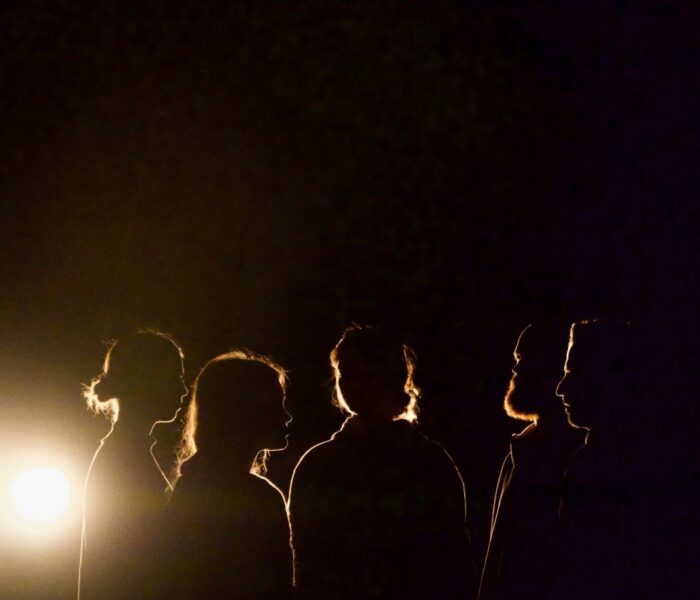A BEGINNING #16161D, c’est ce qu’il reste de la couleur lorsque l’on est plongé dans le noir et c’est l’expérience que nous propose de traverver Aurora Bauza et Pere Jou à l’Auditori de Barcelone les 11 et 12 mars prochain. Une création musicale et chorégraphique originale et poétique qui repousse les limites des sens et s’offre à la fantaisie et à laquelle Hémisphère son est associée. Rencontre avec les deux protagonistes.
Aurora, Pere, où et comment est né votre projet ?
Pere Jou : Il y a onze ans, dans le cadre d’un master de musique interdisciplinaire à l’Ecole Supérieure de Musique de Catalogne et à l’Université Autonome de Barcelone. Nous avions tous les deux le même intérêt pour la découvrir et percevoir la musique sous différents angles. J’ai étudié la musique classique, mais lorsque j’ai rencontré Aurora, je travaillais dans le domaine de la musique pop.
Et vous, Aurora ?
J’ai aussi reçu une formation classique, j’ai étudié le piano, puis la musicologie.
Et puis tout a commencé ?
PB : Petit à petit, nous avons commencé à composer pour des compagnies audiovisuelles, de danse et de théâtre, et notre travail a progressivement fusionné avec un langage scénique, jusqu’à ce que l’intérêt dépasse la situation. Soudain, nous avons ressenti le besoin de créer des propositions dans lesquelles nous travaillions avec le langage scénique, mais d’une manière si complexe que l’on ne savait pas où se terminait le corps et où se terminait la voix.
AB : En fait, nous avons encore du mal à définir notre proposition, car nous sommes parfois catalogués comme théâtre, danse, musique….. Et à vrai dire, je ne sais pas moi-même!
Et comment interprétez-vous cette difficulté à catégoriser et à cataloguer votre proposition ?
AB : L’institution a encore du mal à comprendre que les langages sont de plus en plus hybrides et qu’ils entrent de moins en moins dans des catégories canoniques ; nous continuons encore beaucoup à catégoriser les propositions ; je suppose que c’est pour les rendre compréhensibles au public.
PJ : Nous travaillons sur le musical et le chorégraphique.
AB : Oui, c’est vrai, nous avions besoin de proposer quelque chose de musical mais qui, en même temps, était lié à la scène, mais d’une manière différente.
Et de quel point de vue ?
PJ : Il y a quelque chose dans notre façon de penser la musique qui va au-delà de ce qui est traditionnellement conçu comme musical ; quelque chose qui reste limité au terrain strictement musical.
Donnez-nous un exemple.
PJ : Vous assistez à un concert de musique ancienne et soudain les musiciens sont debout et non assis. Cela nous semble déjà être un choix scénique puissant ; et puis, nous nous demandons, pourquoi ne pas aller plus loin ? Parce que vous percevez les phénomènes sonores non seulement à travers vos oreilles, mais aussi à travers votre vue.
AB : Oui, et esthétiquement aussi. Au début, nous voulions essayer d’autres formats de création musicale. De plus, Pere et moi venions d’une musique très codifiée où tout est très mesuré, avec des dramaturgies sans mouvement. La question est de savoir comment la musique est perçue si le code est différent. C’est dans ce sens que nous abordons la danse.
PJ : Exactement, car la danse comporte des éléments de rythme, de composition, etc. Et la voix, élément crucial de notre recherche, est le lien parfait, parce qu’elle est l’instrument-corps.
AB : En fait, toutes nos recherches partent du corps.
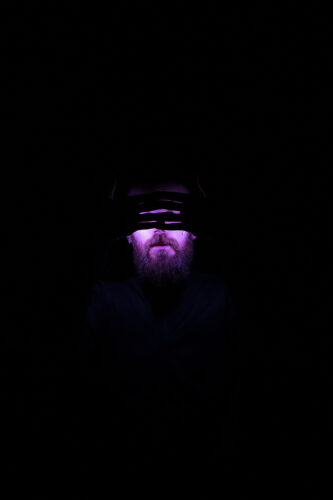
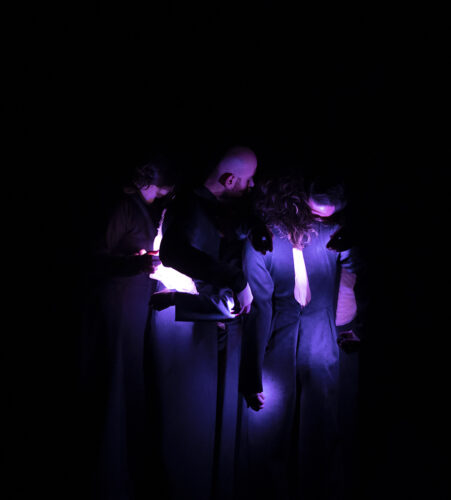
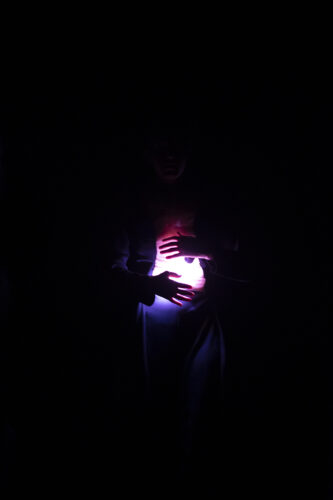
En effet, vous faites des recherches sur le corps, mais dans quelle perspective ?
PJ : Nous avons tendance à disposer les corps dans l’espace pour que la relation entre eux, dans une temporalité très dilatée des événements sur scène, permette de faire naître une série d’images qui renvoient précisément à ces corps.
AB : Oui, et qui renvoient à la construction de soi, aux relations humaines, à la construction du langage et d’un groupe social, de soi avec le groupe, etc ; c’est-à-dire qu’un matériau extra-musical émerge et grâce à lui de nouveaux codes sont perçus sur tous ces thèmes.
Et comment travaillez-vous ?
AB : Nous partons d’une idée qui est généralement plus formelle que conceptuelle. Par exemple, dans le travail réalisé pour l’Auditori, nous sommes partis de l’idée de l’obscurité. Puis, avec un groupe de personnes, nous nous sommes demandé ce qui se passait dans le champ auditif lorsque nous provoquions cette obscurité; ce qui pouvait se passer si, dans cette obscurité, le sens du visuel était éliminé et que d’autres modes de compréhension, de sensibilité et de perception étaient renforcés.
PJ : En d’autres termes, le point de départ était de savoir comment percevoir le mouvement, si ce n’est par le biais du visuel. Il s’agissait de repenser les choses à l’envers.
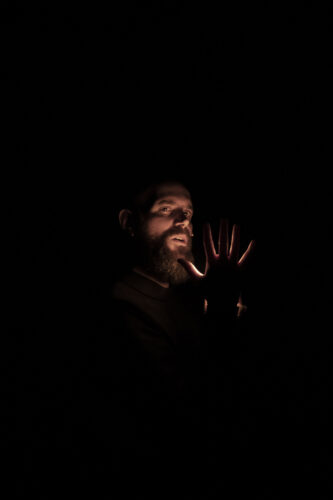
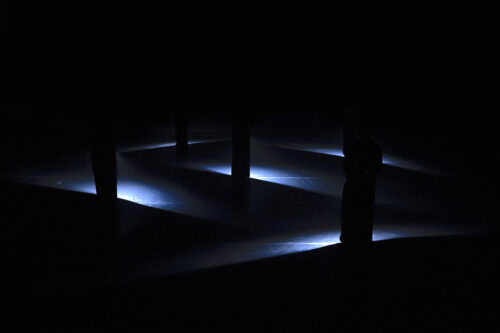
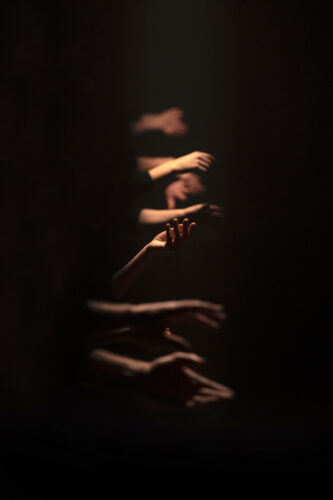
Comme une synesthésie ?
PJ : Oui, et quand dans cette obscurité on met un point de lumière, c’est une grande découverte, presque une épiphanie. La question est de savoir comment dissocier la voix du corps qui la génère. Par exemple, pour que je puisse générer une certaine mélodie ou un certain son avec ma voix, le corps est disposé d’une certaine manière. Je veux donc pirater cela, aller à l’encontre de cela et voir quelle image cela génère.
Ce doit être un travail délicat.
PJ : Nous jouons, nous prenons le temps de chercher et de comprendre ce dont nous voulons parler. Lorsque nous savons de quoi parle la pièce, nous commençons à…
AB : … à la construire. Et nous avons besoin de plusieurs semaines de répétition pour le découvrir : nous devons créer des matériaux, faire des recherches et les tester dans l’espace.
PJ : Bien sûr, comme il s’agit d’une performance, il est nécessaire que les interprètes incorporent et incarnent les matériaux de la composition du mouvement dans son intégrité.
Maintenant racontez-nous comment s’est déroulée votre première pièce “I AM (T)HERE” ?
AB : Nous avions déjà présenté cette première pièce dans un format réduit lors d’un festival créé par le Liceo. Nous avons ensuite reçu une commande de ce festival et nous avons pensé qu’il s’agissait d’une opportunité. Nous avons donc commencé nos recherches, nous l’avons présentée en janvier et nous avons réalisé que nous l’aimions et décidé de continuer à faire des recherches et à la développer jusqu’à ce que nous la présentions au festival Grec (en juillet, ndlr).
PJ : C’était l’idée d’avant : comment dissocier le corps de la voix et proposer deux lignes de langage en parallèle, mais incarnées dans un seul organisme.
Et puis est arrivé WE ARE (T)HERE.
PJ : Oui, cette pièce dure 25 minutes. C’est la même idée mais déplacée vers le groupe, vers le collectif.
AB : Et, bien sûr, cette nouvelle approche a généré d’autres symbolismes.
PJ : En fait, la pièce a suivi sa propre voie : comment une présence scénique se maintient-elle parce que la voix et le corps sont dissociés ?
Cette idée renvoie presque à l’idée classique de savoir si le corps et l’âme peuvent être dissociés.
AB : Quand on voit un corps qui chante, mais dont la présence va dans une autre direction, cela génère un corps qui est aliéné à lui-même, parce qu’il fait deux choses autonomes. Cette présence particulière nous permet de parler des images qui nous intéressent, dans le champ poétique, en suggérant différentes interprétations. Nous plaçons le corps dans un cadre qui permet au spectateur de projeter sur lui de nombreuses interprétations.
PJ : Oui, c’est vrai, mais encadré dans un champ sémantique de relations humaines.
Pour conclure, j’aimerais aborder A BEGINNING #16161D, la pièce que vous allez présenter à l’Auditori.
PJ : Ce chiffre dans le nom est le code d’une couleur. En fait, les couleurs ont des codes.
AB : Il s’agit de la couleur que nous voyons en l’absence de lumière. En fait, nous avons la capacité de voir le noir : par exemple, si nous voyons un objet noir dans des conditions lumineuses. Mais en l’absence de lumière, ce n’est pas du noir que l’on voit, mais une couleur tirant sur le gris, d’où l’idée du titre.
Le point de départ était l’obscurité. Cela résonne très bien.
AB : Oui, nous avons cherché des informations sur tout ce monde de l’obscurité, sur les processus de la rétine, sur la psychologie, la cognition, les personnes souffrant de problèmes de vision, etc.
PJ : J’aimerais que le public le reçoive du point de vue de l’enfant, dans le bon sens du terme, parce qu’en entrant dans l’obscurité, le spectateur sera plongé dans la vulnérabilité, et avec l’idée de la voix, du corps et du mouvement, il entrera dans la fantaisie.
AB : Cette œuvre exige que l’on s’intéresse à d’autres modes de perception, car en extrayant le visuel, qui est le moyen le plus rapide d’analyser la réalité, l’œuvre propose que l’on comprenne ce qui se passe lorsque le visuel est déplacé. S’ouvrir et se laisser porter par la proposition.
Propos recueillis par Txema Seglers
Photos © Anna Fàbrega



)

